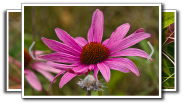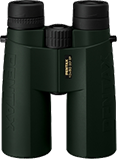blood-necked longhorn beetle
(Callimoxys sanguinicollis)
Conservation • Description • Habitat • Ecology • Distribution • Taxonomy
|
|
||||||||||||||
Description |
Blood-necked longhorn beetle is a small, early season, round-necked longhorn beetle. It occurs in the United States and southern Canada east of the Great Plains and in California. Adults are active from April to June. The larvae have been recorded on hickory, New Jersey tea, oak, roughleaf dogwood, and Carolina laurel cherry. They bore into the wood leaving a narrow linear track (mine). Adult females are 5⁄16″ to ½″ (8 to 13 mm) in length. The body is elongate and dark brown to black. The head is black. It is longer than wide, and it is distinctly narrowed into the rear into a wide neck. The top of the head (vertex) is deeply impressed. The eyes are oriented vertically, and they are deeply notched between the antennae bases, forming a large upper lobe and a small, triangular, lower lobe. The antennae are thread-like, they have 11 segments, and they are long, slightly more than half as long as the body. The mouthparts are projected forward and down. The upper plate on the first segment of the thorax (pronotum) is about as wide as long. It is distinctly narrowed in front into a rounded collar. On each side there is a longitudinal, moderately protruding, rounded projection (tubercle). The pronotum is bicolored, mostly red but with the front and rear margins black to varying degrees. The surface is glossy, densely pitted (punctate), and hairy. The wing covers (elytra) are light brown, thick, and short, usually not extending over the last three abdominal segments. They are broad at the base and for one third to one half of their length, then they gradually become slender and narrow, ending in a sharp, awl-like point. The inner and outer margins are thickened. The surface has large, circular, deep punctures, between which are very tiny circular punctures. The hindwings are mostly clear but lightly clouded blackish on the rear third. The legs are slender and bicolored yellow and black. On the front and middle legs, the third segment (femur) is strongly thickened, club-like, at the tip. On the rear legs, the femur is gradually thickened to a club-like tip. It is usually yellow on the basal half and black on the club. It is rarely entirely black. The fourth segment (tibia) on the rear legs is yellow for most of its length, dark brown on the outer one quarter. It is rarely entirely dark brown to black. The leading margin has two rows of sharp teeth formed by modified punctures with protruding edges. The last part of each leg (tarsus), corresponding to the foot, has five segments, but the fourth segment is minute, and it is concealed between the lobes of the heart-shaped third segment, making it appear that there are only four segments. Each tarsal segment is light brown with a dark tip. Males are smaller, ¼″ to 7⁄16″ (6.0 to 10.5 mm) in length. The head is wider across the eyes. The eyes are larger. The antennae are longer, about three-fourths as long as the body. They are mostly dark brown to black, often lighter at the tip. The pronotum is black, rarely with any red. |
Size |
Female total length: 5⁄16″ to ½″ (8 to 13 mm) Male total length: ¼″ to 7⁄16″ (6.0 to 10.5 mm) |
Similar Species |
Habitat and Hosts |
|
Ecology |
Season |
April to June |
Behavior |
|
Life Cycle |
|
Larva Hosts |
Hickory, New Jersey tea, oak, roughleaf dogwood, and Carolina laurel cherry |
Adult Food |
|
Distribution |
||
|
Sources |
|
| 5/26/2025 | ||
Occurrence |
||
|
||
Taxonomy |
|
Order |
Coleoptera (Beetles) |
Suborder |
Polyphaga (Water, Rove, Scarab, Long-horned, Leaf, and Snout Beetles) |
Infraorder |
Cucujiformia |
Superfamily |
Chrysomeloidea (leaf beetles and allies) |
Family |
Cerambycidae (longhorn beetles) |
Subfamily |
Cerambycinae (round-necked longhorn beetles) |
Tribe |
Stenopterini |
Genus |
Callimoxys |
Subordinate Taxa |
|
|
|
Synonyms |
|
Calimoxys sanguinicollis ssp. sanguinicollis Callimoxys pinorum Callimoxys sanguinicollis ssp. sanguinicollis Callimoxys sanquinicollis ssp. sanquinicollis Molorchus sanguinicollis Necydalis sanguinicollis Stenopterus sanguinicollis |
|
Common Names |
|
blood-collared long-horn beetle blood-necked longhorn beetle |
|
Glossary
Elytra
The hardened or leathery forewings of beetles used to protect the fragile hindwings, which are used for flying. Singular: elytron.
Femur
On insects and arachnids, the third, largest, most robust segment of the leg, coming immediately before the tibia. On humans, the thigh bone.
Pronotum
The exoskeletal plate on the upper side of the first segment of the thorax of an insect.
Punctate
Dotted with pits (punctures), translucent sunken glands, or colored spots of pigment.
Tarsus
On insects, the last two to five subdivisions of the leg, attached to the tibia; the foot. On spiders, the last segment of the leg. Plural: tarsi.
Tibia
The fourth segment of an insect leg, after the femur and before the tarsus (foot). The fifth segment of a spider leg or palp. Plural: tibiae.
Tubercle
On plants and animals: a small, rounded, raised projection on the surface. On insects and spiders: a low, small, usually rounded, knob-like projection. On slugs: raised areas of skin between grooves covering the body.
vertex
The upper surface of an insect’s head.
visitor Photos |
||
Share your photo of this insect. |
||
This button not working for you? |
||
Alfredo Colon |
||
 |
||
 |
 |
|
MinnesotaSeasons.com Photos |
||
|
||
|
||

Slideshows |
|

visitor videos |
||
Share your video of this insect. |
||
This button not working for you? |
||
|
Other videos |
||
|

|
Created: 5/26/2025 Last Updated: © MinnesotaSeasons.com. All rights reserved. |


